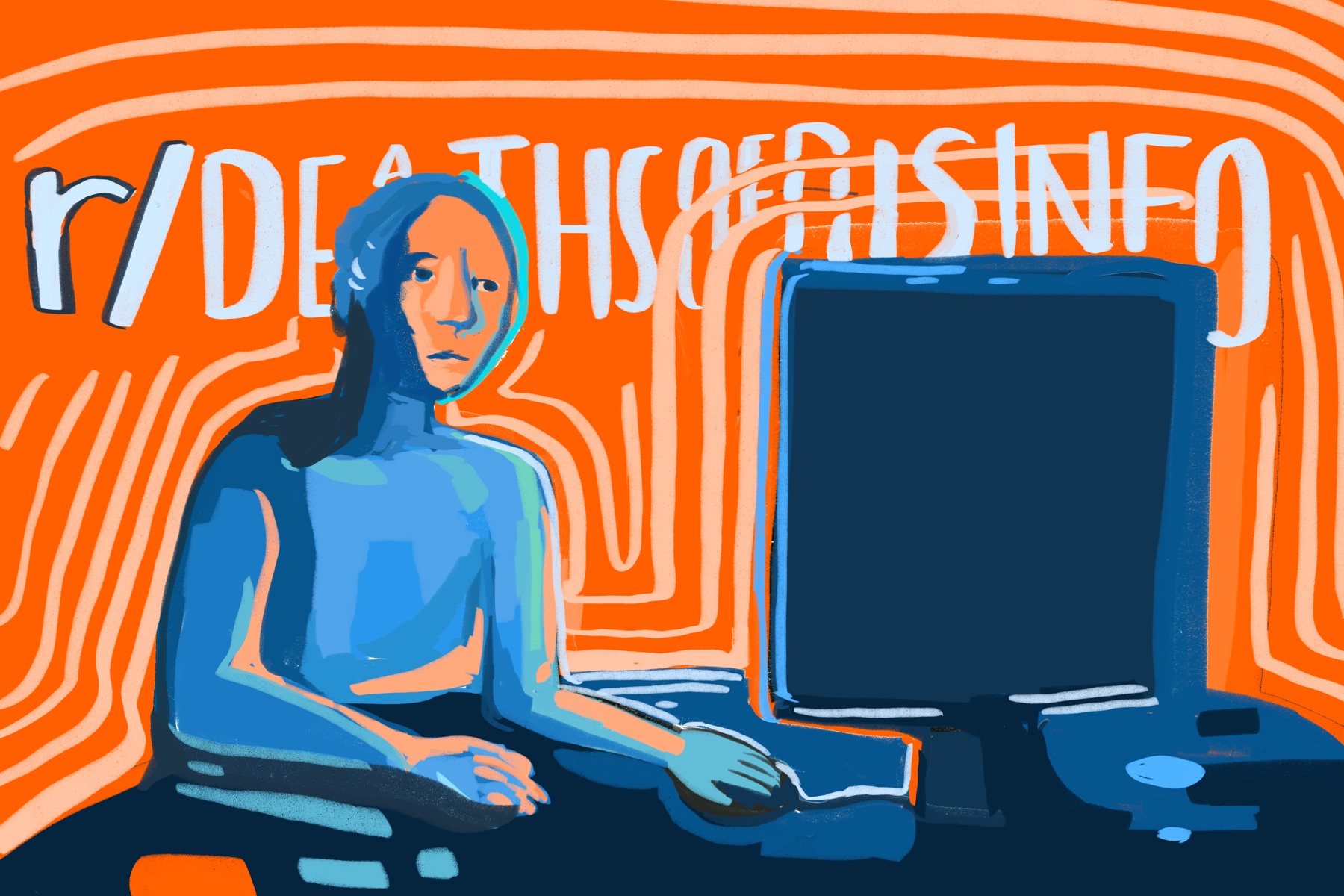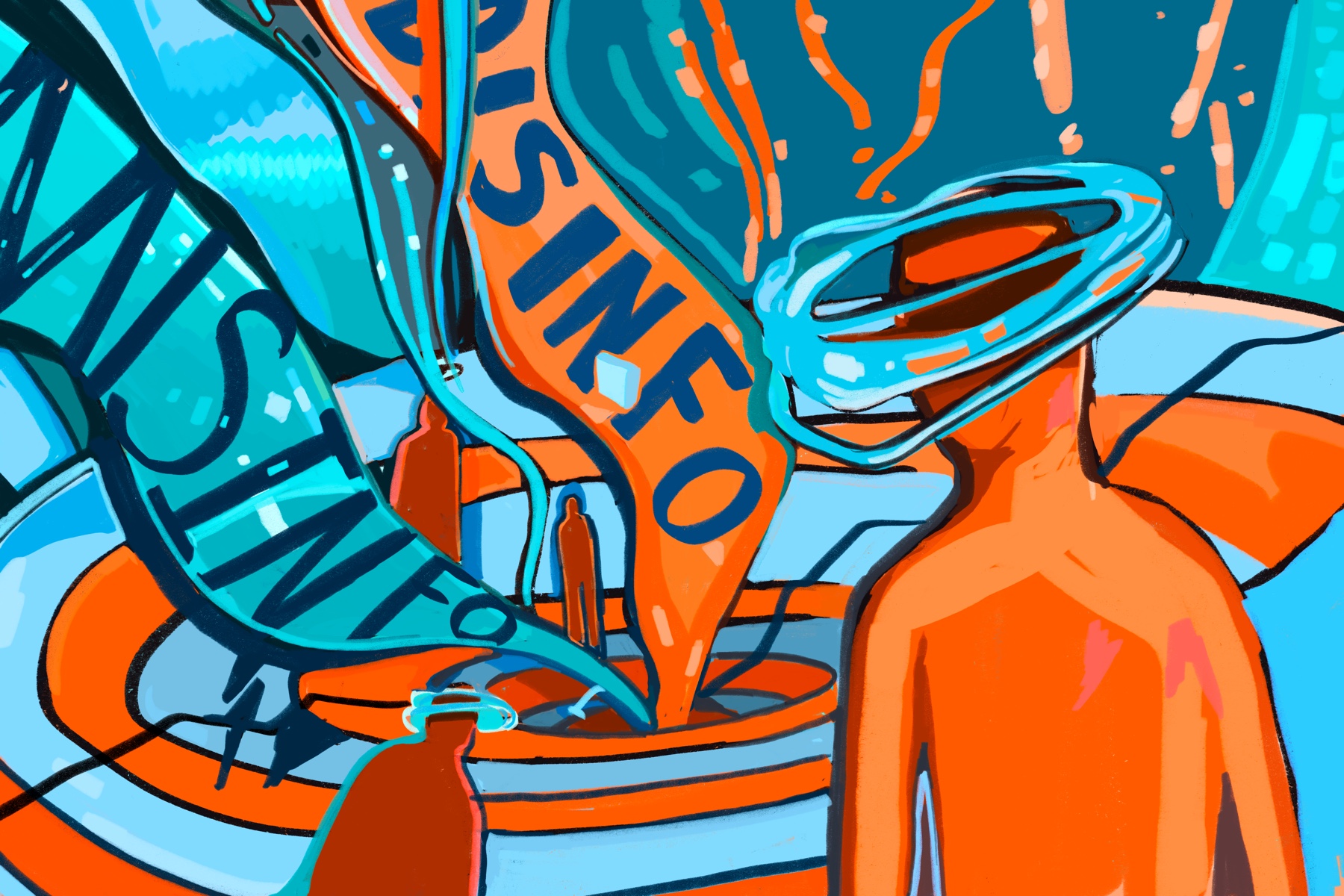There is a plethora of information online about COVID-19 vaccines and how they can reduce the risk of serious illness and death. But with a lot of truthful information comes a lot of false or misleading information too, often leading those already skeptical of vaccines into the deep, understated plague of disinformation.
Contrary to popular belief, not all of this plague is being spread purposefully. False information falls into two categories: misinformation, which is shared by accident, and disinformation, which is shared with malicious intent.
It’s a story many people may have heard before. Someone slowly starts falling down a rabbit hole of conspiracy theories, and eventually, it’s all they talk or post about. In some cases, however, as evidenced by the higher proportion of unvaccinated patients in COVID-19-related hospitalizations, this story can end tragically.
Research data and false interpretation
Christopher Labos, a cardiologist and epidemiologist from Montreal, said he can understand that it can be difficult to identify misinformation, especially when it comes to research. He added that people may even have a tendency to overestimate their abilities to do so.
Labos realized this level of difficulty while completing his master’s in epidemiology at McGill University.
“I realized … how much I didn’t actually know, how much most people didn’t actually know about research, how easy it is for research to go wrong and how easy it is to make a critical error—not an error in terms of measuring things badly but an error of interpretation,” Labos said.
Labos said understanding that everyone can make errors, especially when trying to make sense of research data, has driven him to where he is now.
“One of the things that people often talk about with cell phones is ‘Do cell phones give brain cancer?’ and the answer is they don’t,” Labos said. “People always refer back to this one study called The Interphone Study, which is a fairly old study now.”
The results of the study were overall concerning, he said.
“The highest risk group, the people who use their cell phone the most, had the highest risk of brain cancer, which sounds worrisome until you actually go and read the paper and you realize that they cut up the [group] in such a weird way and the risk wasn’t linear,” Labos said.
It was during his schooling that Labos decided he wanted to know more about the false interpretation of information.
“After I did my medical training, I did a degree in epidemiology. Primarily because at the time, I wanted to get better at doing research,” Labos said. “I wanted to understand how and why research is done the way it is.”

Debunking through reddit
The consequences of an erroneous cost-benefit analysis between the mental, financial or ideological risks of restrictions and the public health threat presented by COVID-19 are documented on the subreddit r/DeathsofDisinfo.
The forum strives to document and prevent the first signs, symptoms and outcomes of malicious disinformation. The online community’s description explains the forum is a “place to acknowledge and respectfully discuss the massive death toll from the COVID-19 pandemic that has been exacerbated by disinformation and denialism.”
The subreddit is closely linked to r/HermanCainAward, another forum that grants symbolicaward nominations to people who prolifically spread COVID-19 misinformation and are subsequently hospitalized. Awards are posthumously granted when nominees, whose identity must be protected, pass away from the disease. Last year, moderators of r/HermanCainAward reached out to frequent reader Annie, who was granted anonymity by the Charlatan due safety concerns, and asked her to be a moderator.
“We’re not there to just make fun of people, we’re there on a mission to show the dangers of what happens when you just blindly follow what other people tell you to do,” Annie said. “Nobody wants them [to die]. There are certain standards in r/HermanCainAward for posts and this is something that outside, a lot of people don’t appreciate: They don’t know how many posts we don’t allow in.”
Annie explained that forum moderators review every post, making sure that they are not duplicating previous posted information and adhere to the strict rules in place. Posts must follow a specific format where the nominee is shown to have prolifically shared pandemic-specific misinformation before being hospitalized for COVID-19. For instance, if all the user publishes are political posts, the post is not allowed.
According to Annie, Herman Cain awardees are a very vocal minority among the casualties of disinformation. As victims of disinformation get hospitalized, they take health-care workers with them, she said. For her, she said r/HermanCainAward does not show the whole story.
“I wanted to have another space to highlight the broader story and I think that people respond differently to different things,” she said.

But Annie said she thinks the number is likely 10 to 20 times higher.
“In the comments of posts, you will see people say ‘This is what convinced my brother,’ ’This is what convinced my friend’ […] and those people are not being counted,” Annie said.
To get an IPA, users have to be willing to use their username, show their vaccine card, make a post about it and admit they were proven wrong.
Documented on r/DeathsofDisinfo are stories highlighting the various consequences of COVID-19 misinformation, including chronic diseases and financial struggles caused by preventable serious illnesses, prolongation of restrictions due to avoidable spread of the disease, overwhelmed healthcare infrastructures and widespread traumas.
All these factors make it easier to understand how misinformation has lethal effects. According to an analysis done by the Kaiser Family Foundation, it is possible that since June 2021, 163,000 deaths could have been prevented with vaccinations in the United States alone.
According to a 2021 report from Statistics Canada, only one in five Canadians actually verified the accuracy of COVID-19 information they consumed online. And just over 50 per cent didn’t verify COVID-19-related information they found online before sharing.
Reporting throughout the pandemic
Another example of misinformation and disinformation has come with the COVID-19 pandemic and its impact on people’s understanding of public health.
Over the course of the pandemic, there has been much discussion about the consumption of ivermectin or bleach to ward off COVID-19, the efficacy of wearing masks and the risks of vaccines. But it raises the following question: Is it someone’s fault for believing this misinformation?
The 2019 measles resurgence within unvaccinated groups in the United States was one example of how getting vaccinated is “not just a personal decision,” Labos explained.
“In the same way that if you decide not to get vaccinated against the measles and enough people end up agreeing with you, you create pockets of vulnerability, where measles outbreaks can happen,” he said.
Considering the 99 per cent survival rate of COVID-19 patients and the over 80 per cent full vaccination rate of Canada as of Feb. 25, a discussion about the mental health ramifications of harsh restrictions has been making some people question if restrictions are worth the consequences.

A long history
Misinformation existed before the introduction of social media and its potential to cause harm is not news. However, with the rise of social media, false information can now spread exponentially faster and on a much larger scale.
By the time that a lie is debunked, it may have already been shared, reshared and sparked countless more lies—almost replicating a snowballing effect of falsehoods. Fake news has been shown to spread much faster than accurate ones, which is especially useful for those looking to spread disinformation.
The Cambridge Analytica scandal during the 2016 United States presidential election is one example of disinformation. Cambridge Analytica, a British data analysis company, was given around six million dollars by Donald Trump’s campaign for data management services, resulting in the collection of 30 to 70 million users’ data without their consent or knowledge.
This information was used to construct a personalized and targeted advertisement campaign aiming to advantageously sway users’ perception of the political climate.
This scheme follows the principle of information dominance. According to Chris Wiley, a former employee of Cambridge Analytica, information dominance is the idea that if someone can control the nature of the content in users’ personalized feeds, they can control how they perceive a certain topic and influence their subsequent reactions and behaviours.
In this particular case, this fake news campaign is believed by some to have majorly contributed to Trump’s presidential victory.
Examples like this exist in the Canadian context as well, especially in terms of the electoral processes. For instance, in light of the 2021 Canadian federal election, McGill University and the University of Toronto launched the Canadian Election Misinformation Project.
A press release from McGill reads “[m]is- and dis-information are a growing threat to the integrity of free and fair elections and to the strength of democracies the world over.”
Misinformation and disinformation are both very harmful. And even with helpful initiatives and resources online, interacting with false information online is sometimes inevitable, whether it is spread intentionally or not. In the age of the COVID-19 pandemic, the consequences of false information can be deadly.
Featured graphic by Sara Mizannojehdehi.





